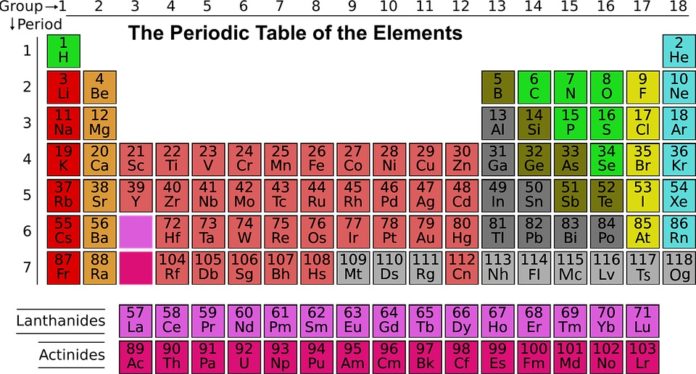In a recent study, on the occasion of 150th anniversary of the formulation of the Periodic Table of Chemical Elements looms, a Michigan State University professor probes the table’s limits.
At 150 years old, the table is still growing. In 2016, four new elements were added to it: nihonium, moscovium, tennessine, and oganesson. Their atomic numbers – the number of protons in the nucleus that determines their chemical properties and place in the periodic table – are 113, 115, 117, and 118, respectively. After decades of research, scientists confirmed these four elements.
Now scientists wonder that how much elements are yet to be added to the periodic table. All elements with in excess of 104 protons are marked as “superheavy,” and are a part of a tremendous, absolutely unknown land that researchers are endeavoring to reveal. It is anticipated that atoms with up to 172 protons can physically shape a nucleus that is bound together by the nuclear force. That power is the thing that keeps its disintegration, yet just for a few fractions of a second.
However, these lab-made nuclei are very unstable and formed after spontaneously decay. For the ones heavier than oganesson, this may be quick to the point that it keeps them from having enough time to attract and capture an electron to shape an atom. They will spend their entire lifetime as congregations of protons and neutrons.
In such condition, this would challenge the way scientists today define and understand “atoms.” They can never again be portrayed as a central nucleus with electrons orbiting.
Scientists are slowly but surely crawling into that region, synthesizing element by element without any idea about their look and end. The search for element 119 continues at several labs, mainly at the Joint Institute for Nuclear Research in Russia, at GSI in Germany, and RIKEN in Japan.
Witek Nazarewicz, Professor of Physics at MSU said, “Nuclear theory lacks the ability to reliably predict the optimal conditions needed to synthesize them, so you have to make guesses and run fusion experiments until you find something. In this way, you could run for years.”
“The discovery might not be too far off: Soon. Could be now, or in two to three years. We don’t know. Experiments are ongoing.”
Although the new Facility for Rare Isotope Beams at MSU is not going to produce these superheavy systems, at least within its current design, it might shed light on what reactions could be used, pushing the boundaries of current experimental methods. If element 119 is confirmed, it will add an eighth period to the periodic table. This was captured by the Elemental haiku by Mary Soon Lee: Will the curtain rise?/ Will you open the eighth act?/ Claim the center stage?
Another exciting question remains. Can superheavy nuclei be produced in space? It is thought that these can be made in neutron star mergers, a stellar collision so powerful that it literally shakes the very fabric of the universe. In stellar environments like this where neutrons are abundant, a nucleus can fuse with more and more neutrons to form a heavier isotope.
It would have the same proton number, and therefore is the same element, but heavier. The challenge here is that heavy nuclei are so unstable that they break down long before adding more neutrons and forming these superheavy nuclei. This hinders their production in stars. The hope is that through advanced simulations, scientists will be able to “see” these elusive nuclei through the observed patterns of the synthesized elements.
As experimental capabilities progress, scientists will pursue these heavier elements to add to the remodeled table. In the meantime, they can only wonder what fascinating applications these exotic systems will have.
The study is published in a recent Nature Physics Perspective by Witek Nazarewicz, Hannah Distinguished Professor of Physics at MSU and chief scientist at the Facility for Rare Isotope Beams.
